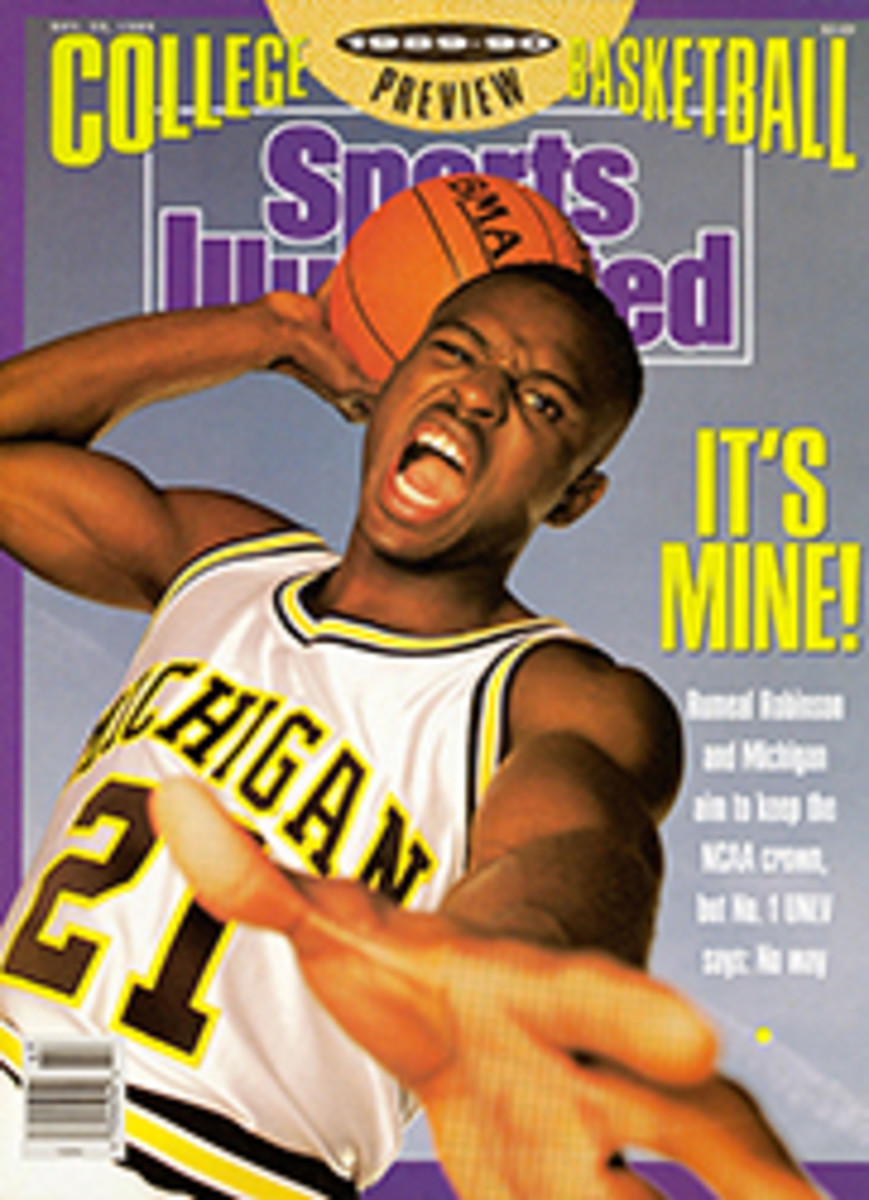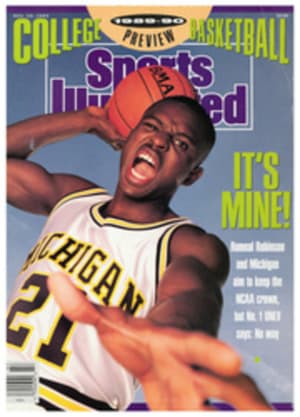
STREAKING BACK AT 1,560 MPH
On the same weekend that Emerson Fittipaldi won this year's Indianapolis 500, an international gathering of Fittipaldi-wannabes congregated at Grand Raceway in Chicago to compete for another racing title. These drivers had cars that cost only $500 but accelerated from zero to 60 mph in less than a second and hit speeds equivalent to 1,560 mph (more on that later). The work done in the pits seemed more like microsurgery than auto mechanics.
Welcome to the 1989 Slot Car World Championships, in which 280 drivers from 27 countries competed for $55,000 in prize money (more on that later). The world championships were bankrolled by Jean Pierre van Rossem, an eccentric Belgian financier. Van Rossem, 44, was slot car racing's sugar daddy for the past four years and one reason that the sport regained popularity.
He also has created quite a stir. On the one hand, van Rossem is determined to protect slot car racing's traditions from the onslaught of high-tech tampering. On the other, he promotes the sport with all the subtlety of Wrestlemania. Suffice it to say that slot car racing is alive and well, but not what it used to be.
Twenty years ago, slot cars were all the rage, and every town big enough to have a traffic light seemed to have a track. One company alone, American Raceways, built 5,000 mini-Indys in storefronts and malls. The Wall Street Journal estimated that sales of slot cars and parts reached $50 million in 1966. "Then in 1968 there was a tremendous crash," says Ken McDowell, whose company, Parma International, has manufactured slot cars since '68. "The sport's growth was just too phenomenal to maintain."
"I compare it to Hula-Hoops," says Dan De Bella, who owns Pro Slot, another surviving manufacturer of cars and parts. "As with so many fads, the market got oversaturated, and people got sick of slot cars."
Today, there are roughly 500 commercial tracks and 30,000 racers nationwide. But they are not just neighborhood kids. These days, "drivers" are adults fluent in techno-speak with money to burn. "I probably have about seven or eight thousand dollars worth of slot car parts back in my hotel room," said Gary Puetz, a product supervisor for Mobil Chemicals in Chicago. Puetz holds the single-lap record of 2.070 seconds on Grand Raceway's six-turn, 155-foot banked course. "Here I am, almost 40 years old, and I'm still playing with toy cars," says John Myers, an advertising executive who spent his 15th wedding anniversary competing in the worlds.
Grand Raceway, which is in a shopping center 25 minutes west of the Loop, boasts that it is the world's fastest track. Brightly painted cars whine with the sound of dentists' drills as they shoot around the wildly twisting circuit. The leaders are listed on a computer screen that's mounted overhead.
The fastest cars travel at about 65 mph. "That may not sound fast," says Stuart Koford of Addison, Ill., who won this year's world title and the $5,000 first prize. "But keep in mind that these cars are one twenty-fourth scale. In full-scale terms the cars are traveling at 1,560 miles per hour. These cars pull 10 G's. Not scale-10 G's, real 10 G's. The space shuttle at takeoff pulls 10 G's."
Koford runs Koford Engineering, which designs slot cars and does consulting work for the Defense Department. "We just finished investigating the causes of electrical failures in aircraft for the Air Force," says Koford. "Our next project is finding an insulating material for night-vision glasses."
Is it odd that a slot car designer should also design some defense systems? "It's all high-tech," says Koford. "Everything is simulated on computers." And what's the biggest difference? "When we make a slot car prototype," says Koford, "our investment is only a couple of thousand."
Koford's cars look like origami figures made of plastic. "They're built for speed, not looks," he says. Cocked wings hold the 11-inch-long cars on the track through the banked turns. But as a car accelerates down the straightaways, the force of air moving over the body flattens the wings, thereby reducing aerodynamic drag. "Speed-controlled aerodynamics," says Koford. "Not even the Indy Cars have tried this trick."
For the myriad qualifying heats and time trials at the world championships, eight drivers at a time line up along Grand Raceway's straightaway, squeezing and releasing controllers that look like power drills without the bits. Heads bob and weave as drivers and spectators follow specific cars around the track.
"I think driving a slot car is more difficult than real racing," says Martin Grammen of West Germany. Grammen is seated in a wheelchair on an elevated platform across from the rest of the drivers. He controls his car by operating a throttle stick on a console resting on his lap Ten years ago Grammen broke his neck when the Formula Two car he was driving slammed into a wall. The accident left his hands paralyzed. "It's taken me quite a long time to get used to driving like this," he says.
Grammen, winner of the world championships' amateur class, is at Grand Raceway courtesy of van Rossem, who flew in 100 drivers from as far away as New Zealand and paid their expenses while they were in Chicago. Van Rossem can afford such indulgences. He made millions forecasting economic trends and is reported to have a controlling interest in more than 60 companies. Picassos hang in his apartment in Brussels. At the 1986 world championships, in Toulouse, France, he awarded a Ferrari—a real Ferrari, $70,000 worth—to one of the winners.
Van Rossem admires slot cars modeled after Jaguars and Porsches, rather than the high-tech wing cars—or what he calls the "space-age wedges of Swiss cheese." To preserve the concept of slot cars as scaled-down racers, in 1988 he created the Concours d'Elègance, with a $2,500 prize for the best model of a car competing in international racing. Gary Cannel, an English train engineer, won the Grand Raceway Concours with a meticulously scaled-down Jaguar.
Le Mans-type races for slot cars were another van Rossem creation, though those races usually run closer to eight hours than the 24 hours of the real thing. He stipulated that both types of cars—the replicas of classic racers and the faster wing cars—share in the prize money in all types of races he sponsored. Then he and De Bella set up Eurotoy, now located in Lowell, Mich., to market the model slots he was promoting. The pros, only a handful really, didn't like the fact that he was kicking them out of the limelight," says De Bella.
Van Rossem's methods have caused others to shy away. To promote a 1987 race in Belgium, he ran a billboard ad throughout Europe that featured a topless blonde. He also delighted in printing National Enquirer-type stories about American racers in the now defunct Euroslot, a magazine he used to publish in Belgium.
He has recently announced he will no longer sponsor races involving wing cars. "I am not interested in those poor devils," van Rossem says of wing car enthusiasts. "I don't even want my name associated with them." Instead, he will be backing a Belgian Formula One team called Moneytron and is planning to invest an additional $5 million in a new slot car racing series.
Wing car organizers are confident that their version of the sport can stand on its own. "It was nice to get free plane tickets," says Koford, "but the sport can survive without van Rossem. We hold over a hundred races a year that have nothing to do with him."
To be sure, the future of slot car racing seems to be based on more than a wing and a prayer.
PHOTO
JOHN NEIHUIS
Fastest track of all is Grand Raceway, site of the world championships.
PHOTO
BRET WILLS
A technoid's dream car features fold-down wings and fun house-mirror lines.
PHOTO
JEAN-MARC LOUBAT/AGENCE VANDY STADT
Van Rossem, who's devoted to realistic slots (right and top), loathes the faster wing cars.
PHOTO
DAVID WALBERG
Today's slot car controllers are economically designed.
TWO PHOTOS
[See caption above.]
Lisa Twyman Bessone is a free-lance writer and former writer-reporter for SI.

